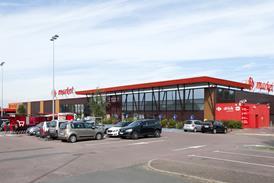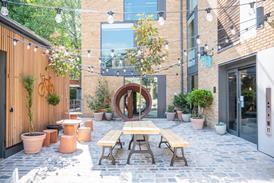An arch is one of the most enduring structures within architecture, and has a unique ability to link two separate elements with strength and beauty. The Oxford-Cambridge Arc, conceived before the pandemic and political uncertainty disrupted planning and development, was intended to create a strong link between the cities of Oxford and Cambridge and extend their prosperity.

Oxford and Cambridge could represent the arch’s abutments: symmetrical pillars upon which the arch ring rests. The arch ring is the technical term for the structure between the two: in this case the counties of Oxfordshire, Buckinghamshire, Northamptonshire, Bedfordshire and Cambridgeshire.
There is symmetry between Oxford and Cambridge: similarities that have existed for centuries and continue to inspire (and challenge) development today. In both cities, we work extensively in gaining planning consent for life sciences and research and development (R&D) clients in science parks. In both counties, science parks are evolving to meet changing requirements.
At Harwell Science and Innovation Centre, planning consent has been received for a new vaccine research and manufacturing facility following consent for the UK’s first bespoke strategic vaccine development and manufacturing centre in September 2020. At Culham Science Centre, planning permission has been granted for the expansion of the Oxfordshire Advanced Skills facility, and an internationally significant Fusion Demonstration Plant project.
In science parks in both counties, areas allocated for employment are evolving to meet changing requirements. At Harwell Science and Innovation Centre, residential development is being explored to complement employment uses, and Culham Science Village is in the planning process to bring forward allocation for 3,500 homes. By doing so in the vicinity of the offices and labs, it is possible to benefit sustainability in line with the council’s net zero policies. The 15-minute neighbourhood has taken on greater importance since the pandemic, and many are looking into the potential of build to rent as demographic change indicates a growing need for high-quality rental units.
Cambridge sites are invariably promoted for R&D first, but with a strong emphasis on sustainable transport infrastructure and more complementary uses than before, creating a more sustainable community.
In Oxford city centre, Oxford Science Enterprises has recently secured planning consent for the transformation of a 1980s indoor shopping centre. This form of non-speculative life-sciences-led redevelopment, centrally based in a university city, is increasingly common and looks likely to be replicated in Cambridge’s Grafton Centre.
Both cities are pioneering in their approaches to biodiversity net gain ahead of the legal requirement and are currently reviewing sustainable transport strategies. Traditional car parks are increasingly restricted to hubs on the periphery and a greater emphasis is placed on facilitating cycle parking and connectivity.
Another similarity is that while both Oxford and Cambridge are buoyant employment, housing and retail markets, both face the common challenges of a large proportion of listed buildings and conservation areas and restrictive green belts.
Returning to the construct of an arch, these abutments, not technically part of the arch, are of little use if they have nothing to support.
The areas that lie between the two contrast considerably with the university cities and are wide-ranging, which explains why some have resisted the artificial coalescence within a development corporation. The arch ring includes: the rolling hills of Buckinghamshire, which locals are so keen to protect that the council withdrew from the arc to “be in control of its own future economic development and housing decisions”; Milton Keynes – the planning experiment that represents everything that Oxford and Cambridge are not; and, depending on the height of the arch, the former new town of Corby to the north.
The purpose of the arc has changed from primarily residential and the arch ring was further weakened when the Expressway was cancelled, followed by the CAM Metro.
Two years ago, the arc was the flavour of the month. But there has been so much political change since then and the political will seems to have gone. Another issue is timing. To drive development across such diverse local authorities requires a long-term strategy: one that extends beyond a political term or the average incumbency of a secretary of state.
The progress of the Oxford-Cambridge Arc to date demonstrates that these areas will continue to prosper because of market forces, but the skill in building an arch lies not in the abutments, but the arch itself. To substantially redraw the map requires a long-term political will that is currently absent both on a local and a national level. It could be said that a pair of abutments with no arch ring is nothing but a premature ruin.
Katherine Jones is associate partner at Carter Jonas































No comments yet